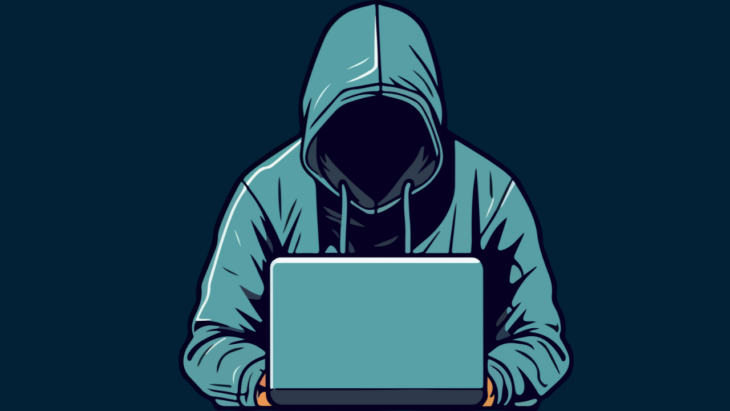There are only two types of companies: those that have been hacked, and those that will be.” – Robert Mueller, 6th Director of the Federal Bureau of Investigation (FBI), 2001–2013.
In the digital age, it’s a popular misconception that “hackers only go after big targets.” Many small and mid-sized businesses (SMBs) operate under the misconception that they are too small to be of interest to hackers. However, the reality is altogether different. Cybercrime is a numbers game and even a small success can be a significant payday. In fact, SMBs are often the prime targets for hackers due to their perceived vulnerabilities.
Cyberattacks on SMBs: A Growing Threat
A new study has revealed a concerning trend in cyberattacks targeting small and medium-sized businesses (SMBs). The number of SMB users encountering malware and unwanted software has increased by 8% in 2024 compared to the previous year. This alarming statistic highlights the growing threat posed by cybercriminals to businesses of all sizes.
For instance, the CDK Global cyberattack in June 2024 disrupted thousands of car dealerships due to two consecutive cyber incidents, highlighting the operational risks posed by such attacks.
As these trends continue to evolve, SMBs must prioritize robust cybersecurity measures to safeguard their operations and customer data against increasingly sophisticated threats.
The Motivations of Cyber Criminals
Howard Aiken’s famous quote, ‘You don’t have to rob a bank if you can own the bank,’ perfectly captures the mindset of modern cybercriminals. They are not interested in physical theft; instead, they seek to exploit digital vulnerabilities for financial gain. Their targets are diverse, but smaller businesses, often with less robust cybersecurity measures, are particularly attractive due to their perceived ease of exploitation. Understanding their motivations is key to grasping the nature of modern cyber threats.
- Financial Gain: The primary motivation for cybercriminals is financial gain. While large corporations may have more significant assets, SMBs are often seen as easier targets. Hackers know that smaller businesses may not have the same level of cybersecurity as larger enterprises, making them more vulnerable to attacks. Ransomware, for instance, is a common tactic where hackers encrypt a company’s data and demand a ransom for its release. SMBs are more likely to pay these ransoms due to their limited resources and the critical nature of their data.
- Data Theft: Data is the new gold, and every business, regardless of size, holds valuable digital assets. Cybercriminals are always on the lookout for valuable data, whether it’s customer information, intellectual property, or financial records. SMBs often hold sensitive data that can be sold on the dark web or used for further malicious activities. Your personal information – email addresses, social security numbers, financial data, or login credentials – is extremely valuable on the dark web.
- Entry Points for Larger Attacks: SMBs might serve as a gateway to larger targets through supply chains or third-party vendor relationships. Hackers often compromise smaller organizations to eventually reach bigger partners.
- Ideological Motivation: While less common, some hackers target businesses for ideological or competitive reasons, regardless of size.
- Thrill-Seeking: For some individuals, the excitement of successfully breaching a system can be addictive. This thrill-seeking behavior can drive amateur hackers to target SMBs simply for the challenge.
Common Myths About Cybersecurity
Myth #1: We Don’t Have Anything Valuable
Hackers are increasingly focusing their efforts on small businesses. Regardless of the size of the business, these fraudsters frequently employ automated technologies to locate weak systems. However, the lack of cybersecurity safeguards in place at numerous small businesses makes them more vulnerable to hacking attempts.
Myth #2: We’re Too Small to Be Noticed
Don’t think you’re too small to be a target. Cybercriminals don’t believe in discrimination. Any business, big or small, can be a victim. Every business, from the smallest startup to the largest corporation, is a potential victim.
Myth #3: Cyberattacks Are Only About Money
Cyberattacks aren’t just about money. Hackers can target companies for ideological reasons or to disrupt operations, potentially damaging their reputation or giving competitors an edge.
Myth #4: We Have Basic Antivirus – We’re Safe
Don’t be fooled by basic antivirus. Cyber threats have evolved, and hackers use sophisticated tactics like phishing and exploiting vulnerabilities. Basic antivirus isn’t enough to keep you safe.
How You Can Protect Your Business
Let’s consider your computers, laptops, and smartphones as the front lines of defense against cyber attacks. Endpoint protection is like a sturdy shield, safeguarding these devices from hackers and malware. But just like a castle needs more than one wall, your business needs a multi-layered security approach.
Imagine a network firewall as a gatekeeper, controlling who enters and exits your digital castle. Data encryption is like a secret code, keeping sensitive information safe even if it falls into the wrong hands. Two-factor authentication is like having a trusted friend verify your identity before you enter. And regular security audits are like inspections, making sure your defenses are still strong.
Emsisoft’s layered protection feature offers a comprehensive defense against malware by combining multiple security techniques. The Swiss Cheese Model is a vital framework in cybersecurity, emphasizing the necessity of multiple overlapping layers of protection to mitigate risks. Emsisoft employs this model through various strategies, including web filtering, behavior blocking, and endpoint detection. This multi-layered approach ensures that even if one defense fails, others remain active, crucial for protecting against dynamic cyber threats and ensuring organizational resilience.
Emsisoft Endpoint Protection: Award-Winning Security Made Simple
Experience effortless next-gen technology. Start Free TrialConclusion
In the ever-evolving landscape of cyber threats, small and mid-sized businesses are increasingly vulnerable targets. By understanding the motivations of cybercriminals, dispelling common misconceptions, prioritizing endpoint protection and multi-layered security, addressing the human factor, and having a robust incident response plan, businesses can significantly reduce their risk of falling victim to cyberattacks. Remember, prevention is key in the world of cybersecurity.
